Small room trends 2025: 5 looks that are forever, say designers
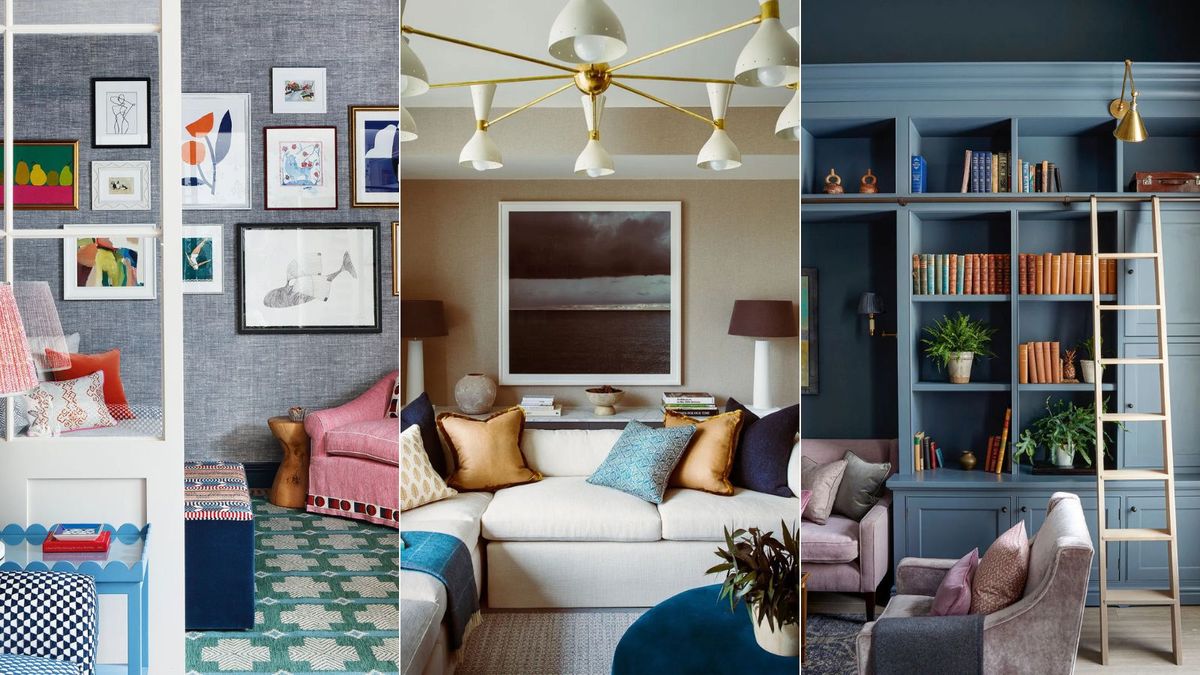
Small room ideas may be limited in size, but they are some of my favorite spaces to decorate. We have curated our favorite small room trends to help turn that awkward room into something elegant and sophisticated, whatever its shape and proportions.
Though small rooms can present many design challenges, compact living has several benefits. A well-designed scheme can feel just as comfortable as a larger space, with all the coziness and comfort associated with family living.
With a focus on enduring materials, sustainability, and design pieces with permanence, the latest interior design trends for small rooms in 2025 are anything but fashionable fads.
The best small room trends
One of the main advantages of a compact space is the convenient accessibility of everything needed. Easy maintenance is another bonus to having a small room.
Often people don’t know what to do with a small space. It can feel harder to transform than a large room, but it just takes planning. Some of my favorite spaces are small rooms – when done well they feel really tailored to the owner and the house.
My edit of the 2025 small room trends focuses on both the fresh ideas brought forward by designers as well as the long-lasting styles and influences that consistently remain at the heart of interior design.
1. Be bold with color drenching
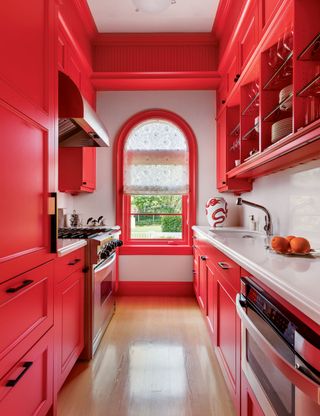
(Image credit: MMB Studio)
For far too long, many homeowners would only decorate with white – and similarly pale colors – in small rooms believing that bright, bold colors would make the space feel overwhelming. However, these days, designers want us to be brave with our color choices. It makes for a more interesting space.
Bold color is one way to grow a space that physically has a small footprint. ‘In this guest house, the small kitchen is narrow, so I wanted to make it a star,’ says Matthew Boland, principal, of MMB Studio. ‘The color – Sherwin-Williams’ Energetic Orange – grabs your attention and allows your eye to travel the entire length and height. The smallest spaces can be the most memorable if you keep the focus strong. Here, the focus was the paint color and we used it with vigor.’
2. Swap freestanding for bespoke-made fitted furniture
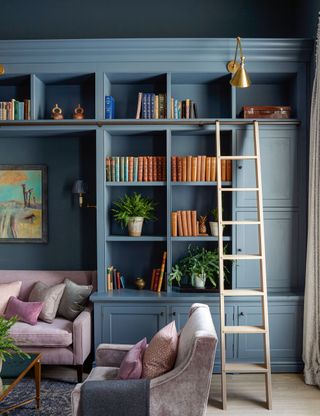
(Image credit: Sims Hilditch)
Fitted furniture works really well in smaller spaces because it can be more efficient than freestanding pieces that have gaps around them and it also looks more unified. In a tiny bedroom, for example, you might want to box in the bed with a fitted closet.
‘I love bespoke joinery in a small space, but I think it looks really smart if you keep all the colors the same so it’s not broken up,’ explains Sarah Peake, founder of Studio Peake.
This beautiful wall of bespoke joinery painted in a moody hue is hugely characterful and provides plenty of open and closed storage. ‘We used a deep smoky color on the walls and joinery of this north-facing space’ says Emma Sims-Hilditch, founder and creative director for Sims Hilditch. ‘The aim was to embrace the darkness of this space, transforming it into a moody and cozy haven. Soft wall and overhead lighting add to the ambiance of this snug room.’
3. Use light-reflecting materials
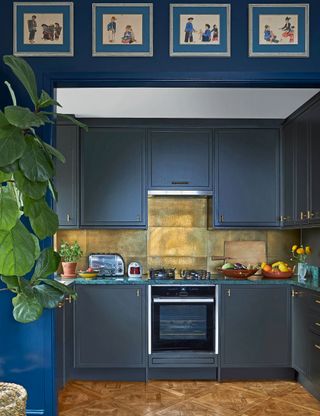
(Image credit: Sibyl Colefax & John Fowler)
The ongoing trend for luxe metals such as copper, brass, and steel has led to some eye-catching designs available. We are already seeing more designers opting for light-reflecting colors and materials in small rooms this year.
In this space, designed by Lucy Mayers, decorator, Sibyl Colefax & John Fowler, light-reflecting colors and materials work together to make a small kitchen look bigger.
‘Using the same strong cabinetry color on walls and ceilings is an effective way to trick the eye, enhancing depth and height. To help balance the dark walls and cabinets, the choice of backsplash was of utmost importance. These porcelain tiles look like brass but are easier to clean and have a brilliant reflective quality, beefed up with under-cabinet lighting. The surface injects a real sense of glamour while helping to bounce light around the space. Avoid overdoing statement surfaces, sometimes having less of something can make it feel even more luxurious.’
It’s a small room decor trend that we started noticing at the end of last year, and one that I expect will endure in 2025.
4. Layered lighting schemes instead of using the ‘big light’
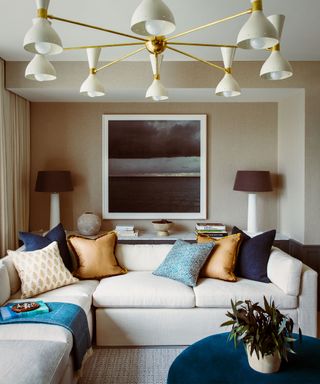
(Image credit: Albion Nord)
Illumination is one of the most important considerations when designing a small room scheme.
You have to pay close attention to lighting in small spaces, especially as they often lack natural light. If it’s a cozy bedroom, you can lean into the fact that the lighting is naturally darker.
In any space, always plan a layered lighting scheme so you have levels: a table lamp, a floor lamp, or something on the wall, as well as ceiling or wall lighting. A directional surface-mounted spotlight can work brilliantly in a low space, such as an attic bedroom, and I love a swing-arm wall light if there’s no space for a bedside table.
In rooms with low ceilings, flush mounts are great, as they don’t hang down. If you don’t have space for lots of lighting fixtures, consider joinery lighting, as it’s tucked away.
Personally, I love to enhance bijou spaces with one oversized fixture. The dramatic chandelier in the small living room of this Albion Nord-designed home adds intrigue.
Small rooms often benefit from larger-than-life elements – many people think a small space should be simple, but I think a small space needs more not less emphasis.
5. Delight with decorative details
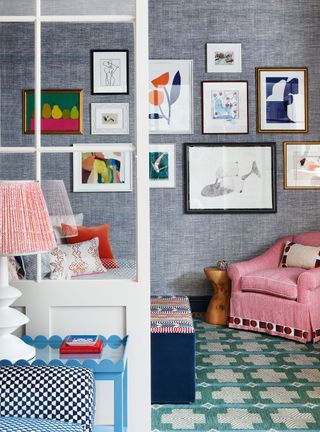
(Image credit: Alexander James / Studio Peake)
Introducing decorative details, patterns, and color clashes will distract from a room feeling small, and ensure it feels cozy and inviting. Nothing should shout louder than anything else so that the eye is not drawn to one feature and the space will not feel too busy.
Eva Sonaike, creative director of Eva Sonaike shares my penchant for decorating with patterns in a small space.
‘I like to play with patterns and colors in small rooms. For example, I might use patterned scatter cushions on a sofa alongside occasional chairs and poufs upholstered in fabrics of your choice. These themes can then be echoed in accessories such as ornaments with colorful designs.’
Little Greene’s creative director, Ruth Mottershead, prefers to add decorative moments to the entrance of her home.
‘Small entryways can often be narrow with little natural light so consider using color and pattern to create a design scheme that brings warmth and light to the space,’ she says. ‘The hallway is a fantastic place to create a first impression for guests, but also the first area you enter when returning home, so consider how you want your home to make you feel: calm and cocooned or cheerful and vibrant? Don’t forget to consider the views into the hallway from other rooms, how much do you see and how will the design you choose for the hallway flow into the rest of the house?’
A small room provides a fantastic opportunity for experimentation. These oft-overlooked spaces are ripe for rediscovery, so mix patterns, clash colors, and go bold.
link

:strip_icc()/bhg-x-walmart-decor-under-tk-to-shop-over-the-long-weekend-tout-c7ebcfda2aff40c7b83dadcbfb24e64e.jpg)

:strip_icc()/bhg-walmarts-hidden-earth-toned-home-shop-tout-75e5d385a0d243b7b972019c33ba5dc8.jpg)



